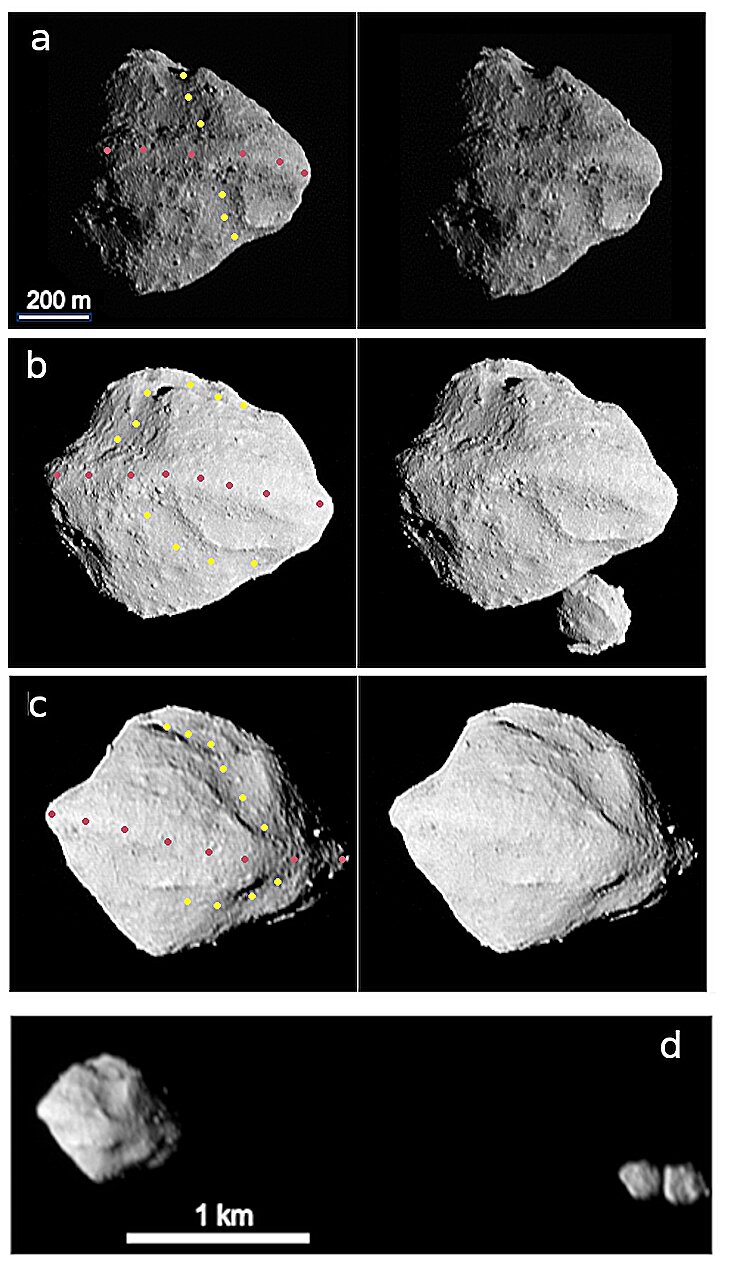 More details: Visit website
More details: Visit websiteIn The News:
Astronomers Surprised After Finding Tiny Moon Is Actually Two Tiny Moons in a TrenchcoatLast year, images taken by NASA's Lucy spacecraft revealed that a tiny moon that orbits an asteroid nicknamed ⁘Dinky⁘ is, in fact, two tiny moons fused together.
The finding baffled scientists, who had never witnessed this kind of satellite, known as a contact binary, orbiting an asteroid.
But thanks to new research, we might be getting closer to piecing together the strange cosmic puzzle. A new NASA study about the strange Dinky discovery, published this week in the journal Nature , posits that the mid-size asteroid likely birthed one or both mini-moons — together dubbed ⁘Selam⁘ — itself. Cosmic twins!
This article has been reviewed according to Science X's editorial process and policies . Editors have highlighted the following attributes while ensuring the content's credibility:
When NASA's Lucy spacecraft flew past its first official target Dinkinesh in November 2023, researchers discovered that the asteroid⁘known as "Dinky"⁘was not alone in space. A satellite asteroid, which the team named "Selam," was orbiting Dinky. As Lucy sent more data back to Earth, the researchers discovered something surprising: Selam was not just one moon, it was a contact binary⁘or two moons melded together.
The Lucy team, which includes University of Maryland Professor of Astronomy and Geology Jessica Sunshine, detailed the unexpected finding in a paper published in the journal Nature on May 29, 2024.
The researchers noted that the unusual arrangement challenges existing theories about how asteroids and other celestial bodies formed over time and provides additional insight into the internal structure, dynamics and evolutionary history of both Dinky and Selam.
"There's a lot more complexity in these small bodies than we originally thought," said Sunshine, a co-author of the paper. "With the additional observations taken by the spacecraft, we were able to better analyze features such as Dinkinesh's rotation speed and Selam's orbit pattern. We also have a better understanding of what materials they're possibly made of, bringing us a step closer to learning just how terrestrial bodies are created."
The team theorized that Dinky's fast spinning motion⁘boosted by the uneven reflection of sunlight off the asteroid's surface⁘caused it to shed and eject rocky debris into orbit. Some of the debris could have aggregated to form Selam, while another portion of the fragments rained back down on Dinky as boulders and created the ridges photographed by the Lucy spacecraft.
"One of the things that's critical to understanding how planets like Earth got here is understanding how objects behave when they hit each other, and to understand that we need to understand their strength," said lead scientist Hal Levison of Southwest Research Institute, Boulder, Colorado, principal investigator for the Lucy mission.
No comments:
Post a Comment